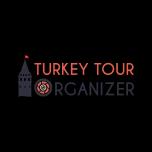

Museum of Troy
When Heinrich Schliemann stole Priam's treasure from the excavation site nearby the Gallipoli strait and published his 'success', the world has learned that the legendary Trojan War was real and it actually took place in the western coastline of Anatolia. The excavation site caught international attention and continued by various archaeologists from abroad starting from 1932. Today, excavations still continue and the Archaeology Museum of Canakkale's capacity required a bigger building.
Where is the Museum of Troy?
The Museum of Troy is located on the left side of the entrance of the Ancient City of Troy. Like the ancient city, it is only 30 kilometers away from the center of Canakkale city and driving takes roughly 30 minutes after you leave the ferry port. If you are driving from the south like Bergama, it will take 3 hours to cover the 190 kilometers of driving distance. Please take a break by the Assos Ancient City on the way to Troy if you are not traveling on a tight calendar.

What to see in the Museum of Troy?
The Museum of Troy houses the artifacts found during the excavations in the ancient city of Troy and the environs. The ramp of the museum is decorated with sarcophagi and the niches on the walls have gravestones. You can see many pictures from the excavations held in the ancient city of Troy. The entrance of the museum has broad information about the civilization layers of Troy. You are able to see the life in Troy during the Neolithic, Chalcolithic, Bronze Age, and the Iron Age in the entrance as well as the science of archaeology. The museum has rich interactive displays and features visual graphical designs. There are seven sections in the museum. The ground floor of the museum explains the history of the peninsula Troy stands. The artifacts on the ground floor are coming from the ancient cities in the region such as Assos, Tenedos, Parium, Alexandria Troas, Smintheion, Lampsacus, Tyhmbria, Tavolia, and Imbros. Besides the information about the excavations in these ancient cities, medical tools, stone and bone tools, marble artifacts, gold, glass, and terra cotta items are exhibited. The first floor takes you on a journey in the Bronze Ages of Troy. The second floor holds items from the Archaic Ages to the Byzantium ages which is the time frame between the 8th Century BC to 12th Century AD. The 3rd floor of the museum has beautiful finds of the region from the Turkish Era. You can see the story of the excavations in Troy starting with Frank Calvert and proceeding with Heinrich Schliemann and Wilhelm Dörpfeld. Priam's Treasures were smuggled from the Ottomans by Heinrich Schliemann to Germany. Even if he had tried to sell the treasure multiple times to the collectors, the majority of the people didn't believe in the existence of Troy and the value of the treasure. He donated the treasure to the National Museum of Berlin which was smuggled to Russia and kept as a war reparation. Today, you can see the treasure in the Pushkin Museum in Moscow.

Numbers about the Museum of Troy
Turkish Government held a competition for the museum project and the Turkish team consisting of Ömer Selçuk Baz, Okan Bal, Cenk Kurtel, Mehmet Yılmaz, Berrin Yavuz won the competition among the 132 projects. Construction started in 2013 and came to a halt for 3 years in 2015. The museum was finished and opened officially on March 18, 2018. The Museum of Troy is among the 100 places to see in the world according to the Time magazine of August 2019. Troy Museum is a nominee to the 2020 European Museum of the Year Award. The museum is designed like an ancient artifact found on an excavation site. The rusty crust rises on top of a cement block that hides the ground floor bearing conference room, shops, workshops, and storages. There are no stairs in between the floors but a 480-meter long ramp encircling the structure. There are more than 6 thousands artifacts displayed in the museum and more than 30 thousand of them are in the depots. The artifacts are brought from the Archaeology Museum of Canakkale, Archaeology Museum of Istanbul, and Anatolian Civilizations Museum of Ankara. The height of the museum is the same as the depth archaeologists reached during the excavations of the ancient city of Troy. The exhibition area covers roughly %20 of the 12.750 square meters total covered area of the building.
------------------------------------
Would you like us to tailor you a private itinerary, including The Museum of Troy? Benefit from our expertise. We offer tailor-made tours to Turkey for all interests and desires, from romantic honeymoons and scenic self-drive road trips to photo tours with experienced photographers and cultural tours in major destinations. We arrange everything for your Turkey Tours, including hotel bookings, airport transfers, guided tours, and top-notch experiences. We want you to have a great time in Turkey and make sure your trip is a memorable one as we have escorted so many tours in Turkey personally. Imagine dealing with only one person for all your travel details, receiving customized itineraries and recommendations which will suit exactly your travel interests. Contact Turkey Tour Organizer to get a personalized day-by-day itinerary for your trip to Turkey.
Kadir Akın
Kadir Akin is the managing partner of Turkey Tour Organizer Co. and a highly skilled travel advisor and tour guide. Kadir has worked in the tourist sector for more than 15 years, and he has a wealth of experience in trip planning and offering first-rate guiding services.
Whether visiting historical sites, trying the food, or finding off-the-beaten-path jewels, traveling with Kadir as your tour guide ensures a genuine and educational experience. Anyone looking for an insider's view of Turkey will find him to be a reliable and sought-after guide thanks to his love for his country and commitment to his profession.